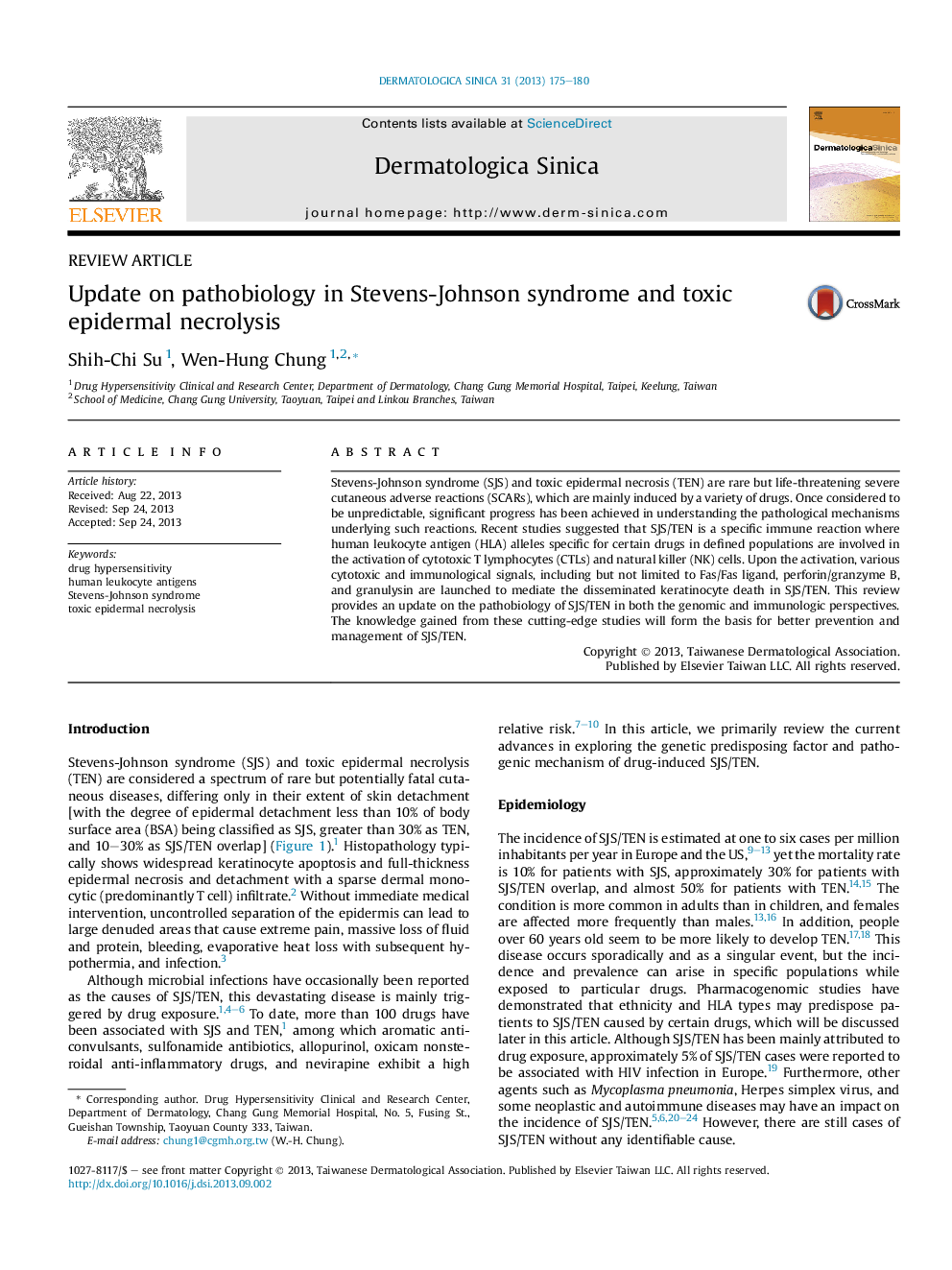| Article ID | Journal | Published Year | Pages | File Type |
|---|---|---|---|---|
| 3196450 | Dermatologica Sinica | 2013 | 6 Pages |
Stevens-Johnson syndrome (SJS) and toxic epidermal necrosis (TEN) are rare but life-threatening severe cutaneous adverse reactions (SCARs), which are mainly induced by a variety of drugs. Once considered to be unpredictable, significant progress has been achieved in understanding the pathological mechanisms underlying such reactions. Recent studies suggested that SJS/TEN is a specific immune reaction where human leukocyte antigen (HLA) alleles specific for certain drugs in defined populations are involved in the activation of cytotoxic T lymphocytes (CTLs) and natural killer (NK) cells. Upon the activation, various cytotoxic and immunological signals, including but not limited to Fas/Fas ligand, perforin/granzyme B, and granulysin are launched to mediate the disseminated keratinocyte death in SJS/TEN. This review provides an update on the pathobiology of SJS/TEN in both the genomic and immunologic perspectives. The knowledge gained from these cutting-edge studies will form the basis for better prevention and management of SJS/TEN.
